| Date | Text | |
|---|---|---|
30 Nov 1885

Dorothea Klumpke |
Dorothea Klumpke (astronomy) Dorothea Klumpke takes up a post at the Paris Observatory, becoming Director of the Bureau of Measurements. |
|
30 Nov 1885

Dugald Clerk |
Dugald Clerk (history of science) Dugald Clerk publishes The Gas and Oil Engine in London. |
|
30 Nov 1885
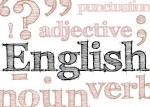
English |
English (mathematics) English mathematician Rev. William Allen Whitworth is the first to use ordered Bell numbers to count the number of weak orderings of a set. |
|
30 Nov 1885

Charcot–Marie–Tooth disease |
Charcot–Marie–Tooth disease (medicine) The classic descriptions of Charcot–Marie–Tooth disease are published by Jean-Martin Charcot and his pupil Pierre Marie in Paris and by Howard H. Tooth in London. |
|
30 Nov 1885

Richard von Krafft-Ebing |
Richard von Krafft-Ebing (medicine) Dr Richard von Krafft-Ebing's Psychopathia Sexualis: eine Klinisch-Forensische Studie ("Sexual Psychopathy: a Clinical-Forensic Study") is published in Stuttgart. |
|
30 Nov 1885

Thomas Allinson |
Thomas Allinson (medicine) Dr Thomas Allinson's popular book A System of Hygienic Medicine is published in England, promoting health through natural diet and exercise rather than orthodox medicine. |
|
30 Nov 1885
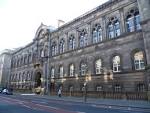
Edinburgh School of Medicine for Women |
Edinburgh School of Medicine for Women (medicine) Edinburgh School of Medicine for Women is founded by Dr Sophia Jex-Blake. |
|
30 Nov 1885
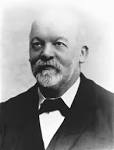
Gottlieb Daimler |
Gottlieb Daimler (technology) Gottlieb Daimler produces the first motorboat, Neckar, in Germany. |
|
30 Nov 1885

Auguste Mustel |
Auguste Mustel (technology) Auguste Mustel invents the celesta. |
|
30 Nov 1885

Herbert Akroyd Stuart |
Herbert Akroyd Stuart (technology) Herbert Akroyd Stuart produces his first prototype heavy oil engines, in England. |
|
30 Nov 1885

Schuyler Wheeler |
Schuyler Wheeler (technology) Schuyler Wheeler produces the first electric fan, in the United States. |
|
30 Nov 1885
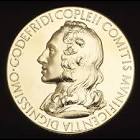
Copley Medal |
Copley Medal (awards) Copley Medal: Franz Neumann |
|
30 Nov 1885
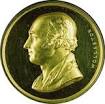
Wollaston Medal |
Wollaston Medal (awards) Wollaston Medal for Geology: Alfred Des Cloizeaux |
|
17 Jan 1886
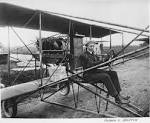
Glenn L. Martin |
birth Glenn L. Martin Born 17 Jan 1886; died 4 Dec 1955 at age 69. Glenn Luther Martin was an American aeronaut and inventor whose bombers and flying boats played important roles in WW II. His first planes were built in collaboration with mechanics from his auto shop, working in a disused church building that Martin rented. In 1909, Martin made his first successful flight; by 1911 he numbered among the most famous of the “pioneer birdmen.” He incorporated the Glenn L. Martin Aircraft Company in 1912 as a manufacturer, and remained for forty years the senior aircraft manufacturer in the U.S. The vast majority of the more than 11,000 planes built by the company before it ceased producing aircraft in 1960, Martin Bombers pioneered the doctrine of airpower in the 1920's to 1930's and served in all theaters in World War II. |
|
28 Jan 1886

Hidetsugu Yagi |
birth Hidetsugu Yagi Hidetsugu Yagi, Japanese electrical engineer (died 1976) |
|
23 Feb 1886
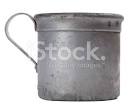
Aluminium isolated |
Aluminium isolated In 1886, Charles M. Hall, a young U.S. chemist, completed his electrolytic process for the separation of aluminum from its ore, a mere eight months since he graduated from college. He dissolved the alumina ore in a bath of cryolyte (a mineral containing flourine, sodium and aluminum) and passed electric current through the solution. The process he patented (2 Apr 1889) was the first to become an inexpensive, commercial application. Production began in Nov 1888 by the Pittsburgh Reduction Company started , which later became ALCOA, the Aluminum Company of America. |
|
25 Feb 1886
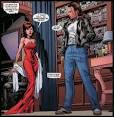
Katherine Sophia Kane |
death Katherine Sophia Kane Lady Katherine Sophia Kane, Irish botanist (born 1811) |
|
07 Mar 1886
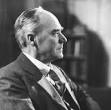
G. I. Taylor |
birth G. I. Taylor G. I. Taylor, English physicist (died 1975) |
|
11 Mar 1886
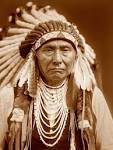
Indian |
Indian (medicine) The first Indian woman doctor qualifies in Western medicine, Anandi Gopal Joshi (d. 1887) at the Woman's Medical College of Pennsylvania (U.S.) She is followed by Kadambini Ganguly at the Calcutta Medical College. |
|
13 Mar 1886

Austin Flint |
death Austin Flint Died 13 Mar 1886 at age 73 (born 20 Oct 1812). American physician who was an eminent doctor and pioneer of heart research in the United States during the nineteenth century. In 1847, he founded Buffalo Medical College and taught at several medical schools. Flint was an authority on pulmonary and respiratory diseases, and popularized the use of the binaural stethoscope. The Austin Flint murmur is a heart disorder he described in 1862 in which blood from the aorta is regurgitated into the heart before contraction of the ventricles. An authority on pulmonary and respiratory diseases, he popularized the use of the binaural stethoscope. The best known of his numerous textbooks is Treatise on the Principles and Practice of Medicine (1866). |
|
13 Mar 1886

Albert William Stevens |
birth Albert William Stevens Born 13 Mar 1886; died 26 Mar 1949 at age 63. U.S. Army officer, balloonist, and early aerial photographer who took the first photograph of the Earth's curvature (1930) and the first photographs of the Moon's shadow on the Earth during a solar eclipse (1932). On 11 Nov 1935, Stevens made a record balloon ascent in the Explorer II to 72,395 ft with Captain (later Lieutenant General) Orvil Anderson at Rapid City, S.D. |
|
30 Mar 1886

Stanislaw Leshniewski |
birth Stanislaw Leshniewski Born 30 Mar 1886; died 13 May 1939 at age 53. Polish logician and mathematician who was a co-founder and leading representative of the Warsaw school of logic. |
|
05 Apr 1886

Frederick Lindemann |
birth Frederick Lindemann Frederick Lindemann, German-born British physicist (died 1957) |
|
22 May 1886

Hermann Stieve |
birth Hermann Stieve Hermann Stieve, German anatomist and histologist (died 1952) |
|
26 Jun 1886

Henri Moissan |
Henri Moissan (chemistry) Henri Moissan reports the successful isolation of elemental fluorine by electrolysis of a solution of potassium hydrogen difluoride in liquid hydrogen fluoride. |
|
01 Jul 1886

Otto Wilhelm Hermann von Abich |
death Otto Wilhelm Hermann von Abich Otto Wilhelm Hermann von Abich, German mineralogist and geologist (born 1806) |
|
03 Jul 1886

Linotype newspaper |
Linotype newspaper In 1886, the first U.S. newspaper page set by Linotype was the New York Daily Tribune for this day's editorial page. Ottmar Mergenthaler (born in Württemberg, Germany on 11 May 1854) had produced the world's first linecasting machine; the time-consuming process of setting type by hand was eliminated. The machine was originally called "Blower" and later renamed "Linotype" (short for "Line of type"). Within six years of this day's demonstration, 1,000 Linotype machines had been made. By 1904, worldwide there were 10,000 Linotype casting machines in service. |
|
03 Jul 1886

Ottmar Mergenthaler |
Ottmar Mergenthaler (technology) Ottmar Mergenthaler's Linotype machine is introduced at the New-York Tribune. |
|
06 Jul 1886

Ronald Hatton |
birth Ronald Hatton Ronald Hatton, English pomologist (died 1965) |
|
09 Jul 1886

Charles Hall |
Charles Hall (metallurgy) Charles Hall files a United States patent for the Hall–Héroult process for converting alumina into aluminum by electrolysis. |
|
30 Jul 1886

Muthulakshmi Reddi |
birth Muthulakshmi Reddi Muthulakshmi Reddi, Indian physician and social reformer (died 1968) |
|
17 Aug 1886
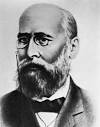
Aleksandr Butlerov |
death Aleksandr Butlerov Aleksandr Butlerov, Russian chemist (born 1828) |
|
24 Aug 1886
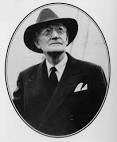
William Francis Gibbs |
birth William Francis Gibbs Born 24 Aug 1886; died 6 Sep 1967 at age 81. American naval architect, one of the most renowned in his time, having designed over 6,000 ships from a fireboat, to freighters, ocean liners and warships. Early in his life, he began building self-taught skills by studying blueprints and existing vessels. In 1915, Gibbs and his brother Frederic H., joined the International Mercantile Marine Company, but had their own firm by 1922 which converted an ex-German liner into the American luxury liner SS Leviathan. The Gibbs firm oversaw the design of 74% of all naval vessels built during WW II, making Gibbs an outstanding contributor to the American war effort. Postwar, he realized his lifelong dream: the 1,000 foot superliner, the SS United States, the fastest ship to cross the Atlantic. |
|
14 Sep 1886

Typewriter ribbon patented |
Typewriter ribbon patented In 1886, the first U.S. patent for a typewriter ribbon was issued to George Kerr Anderson of Memphis, Tennessee (No. 349,026). His invention was to provide portions near the ends of a ribbon with a colour contrasting from that of the body of the ribbon. This was intended to notify the operator of the machine to manually change the direction of the ribbon feed. Although the typed result near the end of a ribbon would be in a different colour, it was not lost. Before, in uses such as stenographic work, if a ribbon stopped at the end of its reel, the result gave a rapidly fading imprint while there may still be a need to finish a line before stopping to reverse the ribbon. |
|
18 Sep 1886

Sampson Gamgee |
death Sampson Gamgee Sampson Gamgee, English surgeon (born 1828). |
|
21 Sep 1886

William Stanley, Jr. |
William Stanley, Jr. (technology) William Stanley, Jr. patents the induction coil in the United States, the first practical alternating current transformer device. |
|
26 Sep 1886

Archibald Hill |
birth Archibald Hill Archibald Hill, English physiologist, winner of the Nobel Prize in Physiology or Medicine (died 1977) |
|
31 Oct 1886

Dom Luís Bridge, Porto |
Dom Luís Bridge, Porto (technology) Opening of Dom Luís Bridge, Porto, a two-hinged double-deck arch bridge across the Douro River in Portugal designed by Téophile Seyrig. Its main span of 172 metres (564 ft) will remain the world's longest in iron. |
|
11 Nov 1886
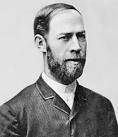
Heinrich Hertz |
Heinrich Hertz (physics) Heinrich Hertz verifies at the University of Karlsruhe the existence of electromagnetic waves. |
|
14 Nov 1886

Alexandre-Emile Béguyer de Chancourtois |
death Alexandre-Emile Béguyer de Chancourtois Alexandre-Emile Béguyer de Chancourtois, French mineralogist and geologist (born 1820). |
|
20 Nov 1886

Karl von Frisch |
birth Karl von Frisch Born 20 Nov 1886; died 12 Jun 1982 at age 95. Zoologist whose studies of communication among bees added significantly to the knowledge of the chemical and visual sensors of insects and simple animals. He shared the 1973 Nobel Prize for Physiology or Medicine with animal behaviourists Konrad Lorenz and Nikolaas Tinbergen. He showed that bees have the ability to recognize different odours and tastes, and discovered their famous "waggle dance" used by bees to communicate among with others in the hive. This sequence of body movements indicates the direction and distance to food. He showed polarized light is used by the bees as a "compass" for navigation, even when the sun is not visible. In fish, he demonstrated their acute hearing, and ability to distinguish colours and brightness. |
|
30 Nov 1886

A.C. power plant |
A.C. power plant In 1886, the first commercially successful U.S. alternating current power plant was opened at Buffalo, N.Y. by George Westinghouse. Compared to Thomas Edison's direct currect ventures, AC transmission distance could be increased by miles using transformers at the source for transmission at much higher voltage, which also decreased energy losses. (Earlier in the year, on 6 Mar 1886, he operated an experimental facility, the first AC power plant in the U.S., at Great Barrington, Mass. where he demonstrated transmission at 500 volts for 4000 feet, stepped down to 100-volt for lights in stores. It began generating commercial power two weeks later, but it was shortly abandoned when it became damaged by an accident.) |
|
09 Dec 1886
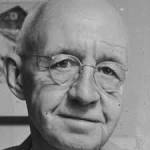
Clarence Birdseye |
birth Clarence Birdseye Clarence Birdseye, American founder of the modern frozen food industry (died 1956) |
|
26 Dec 1886

Theodor von Oppolzer |
death Theodor von Oppolzer Theodor von Oppolzer, Austrian astronomer (born 1841) |